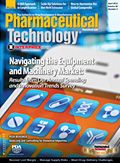Know the Regulations
The contract provider needs to know as much as the NDA holder.
Auditing a firm's complaint and out-of-specification systems have always been favorite areas for regulators to assess to determine the compliance, effectiveness, and adherence of a company's quality system to the regulations.

Susan J. Schniepp
In today's regulatory environment, it is important for organizations to know the regulations with the same depth of knowledge and understanding as regulators. If an organization happens to be a contract manufacturer, it might also find itself in the position of providing that in-depth regulatory expertise to customers. In either case, the contract manufacturer and its customers must be able to work with each other and within the regulatory requirements to assure that the product manufactured and released for patients is of the highest quality. The partnership between the contract provider and contract giver must reflect the requirements and time commitments as defined in the regulations.
Potential out-of-spec and adverse event reports
In situations where more than one organization is involved in the complaint and out-of-specification (OOS) processes for the product, all participating organizations must be harmonized in their approach for handling customer complaints and OOS results. In this author's opinion, it is the responsibility of the license holder (i.e., the NDA holder) to make sure its contract providers have the necessary processes and timelines in place to meet the necessary regulatory expectations. Likewise, it is up to the contract providers to make sure their internal systems meet regulatory expectations for all their clients.
These systems should have established, agreed-to turnaround times regardless of whether the organization manufactures its own products or contracts the manufacturing and testing to external organizations. Complications can arise when more than one organization is involved in the processes and timelines for handling complaints and OOS results.
The parties involved therefore must establish internal requirements that are consistent with the regulatory guidelines and give both parties sufficient time to conduct the needed activities required for the investigation into the complaint or OOS. The processes and timelines for handling complaints should be defined in a Quality Agreement and the related SOPs of the respective organizations and should include a clear delineation of which organization is responsible for various aspects related to the investigation.
Contract organizations should establish timeframes for completing certain investigation activities, which may vary from client to client, but are usually completed within 30 days. The internal SOPs for handling complaints should be robust enough to be able to handle various clients' needs without creating multiple SOPs on the same topic. The process for investigating and handling OOS results should be similarly defined.
The complaint SOP and the Quality Agreement also should address the turnaround requirements needed to investigate complaints associated with adverse or serious unexpected adverse events. For these complaints, the turnaround time must be able to accommodate tighter regulatory requirements. The license holder (i.e., the client) is required to submit a Field Alert within 3 working days after becoming aware of a reported problem either through a complaint or internal testing.
In these cases, the complaint must be investigated quickly by the contract manufacturer. The turnaround time for these types of investigations should be defined in the Quality Agreement and subsequent SOPs and must be more expeditious than the timelines for handling routine investigations. OOS reports also require an expedited timeline for communicating confirmed results to the client because of the potential impact to product already distributed for use.
In some cases, there may be more than two organizations involved in product manufacturing. These relationships can be complicated and communication lines blurred. The license holder must make sure through its various Quality Agreements that compliance to the regulations is met and responsibilities are clearly defined and adhered to.
Potential regulatory situations
Below are few scenarios that demonstrate how complaint handling and OOS reporting can be handled to meet regulatory expectations.
Scenario 1. The license holder receives a complaint from a hospital indicating that a lyophilized product will not completely dissolve. The license holder manufactures and tests the product. It completes its investigation and closes it within 30 days as defined in the SOP. In this scenario, there is little risk of regulatory audit action should the complaint be reviewed during an inspection.
Scenario 2. The license holder receives a complaint from a hospital indicating that a lyophilized product will not completely dissolve. The Quality Agreement indicates the contract manufacturer has 30 days to complete a complaint investigation but restricts them from closing the investigation until the license holder gives approval. The complaint is passed on to the contract manufacturer for investigation within 5 days of receipt. The contract manufacture investigates the complaint and the results of the investigation are provided to the license holder within 20 days from receipt. The license holder reviews the investigation and closes the investigation in its system and notifies the contract manufacturer to close its investigation. The timelines for handling complaints and completing the investigation as defined in the Quality Agreement and SOP have been met. In this scenario, there is little risk of regulatory audit action should this complaint be reviewed during an inspection.
Scenario 3. The license holder receives a complaint from a customer indicating that a lyophilized product will not completely dissolve. The Quality Agreement indicates that the contract manufacturer has 30 days to complete a complaint investigation but restricts the contract manufacturer from closing the investigation until the license holder gives approval. The complaint is passed on to the contract manufacturer for investigation within 5 days of receipt. The contract manufacture provider investigates the complaint and the results of the investigation are provided to the license holder within 20 days from receipt. The license holder reviews the investigation and closes the investigation in its system but does not notify the contract manufacturer to close its investigation. In this scenario, the typical timelines for handling complaints and completing the investigation as defined in the Quality Agreement and SOP have been met.
In this scenario, there is a slight risk of regulatory audit action at the contract-manufacturing site because its complaint displays as "open." The contract manufacturer needs to show due diligence that it has requested a statement from the license holder to close the complaint should this complaint be reviewed during an inspection.
Scenario 4. The license holder receives a complaint from a hospital indicating a patient experienced a serious adverse event (SAE). The Quality Agreement indicates that the contract manufacturer has 30 days to complete a complaint investigation but restricts the contract manufacturer from closing the investigation until the license holder gives approval. The contract manufacturer has an SOP in place that defines the process for handling complaint investigation for SAEs. The complaint is passed on to the contract manufacturer for investigation within 24 hours. The contract manufacturer investigates the complaint and the results of the investigation are provided to the license holder within 24 hours. The license holder accepts the investigation of the contract manufacturer and completes its own investigation within 24 hours. The result of the investigation is satisfactory and no field action is needed.
In this scenario, the typical timelines are not appropriate. There is a risk that the contract manufacturer could be cited for a regulatory violation because its complaint remains "open." In this case, it is fortunate that the contract manufacturing organization has an SOP that defines its heightened reporting requirements for handling complaints associated with SAEs. The contract manufacturer needs to show due diligence that it has requested a statement from the license holder to close the complaint should this complaint be reviewed during an inspection. Both parties need to revise the Quality Agreement to define responsibility and timelines associated with investigations associated with SAEs.
Scenario 5. The license holder is informed of an OOS result from the contract-testing laboratory responsible for final product testing. The OOS was for a moisture failure on stability. The license holder has independent Quality Agreements with the contract testing organization and the contract manufacturing organization. The OOS is confirmed by the contract-testing laboratory. The separate Quality Agreements, in this case, may not have been reviewed to ensure consistency regarding timelines, notifications to regulatory agencies and partners, and authorizations to close. These inconsistencies may lead to increased regulatory scrutiny and possible actions if deemed sufficiently serious.
Conclusion
The above scenarios illustrate how important it is for all parties involved in product manufacturing to understand the regulatory requirements and build requirements into SOPs and agreements so that unnecessary regulatory actions during inspections can be averted.
In today's environment, all parties must take responsibility for product quality and regulatory compliance through clear delineation and communication of responsibilities through Quality Agreements and internal SOPs.
Susan J. Schniepp is vice-president of quality at OSO Biopharmaceuticals and a member of the PharmTech Editorial Advisory Board.
